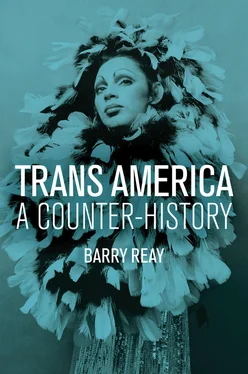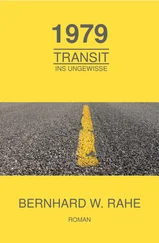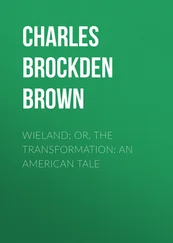14 14. H. L. Talley, ‘Facial Feminization and the Theory of Facial Sex Difference: The Medical Transformation of Elective Intervention to Necessary Repair’, in J. A. Fisher (ed.), Gender and the Science of Difference: Cultural Politics of Contemporary Science and Medicine (New Brunswick, NJ, 2011), ch. 10; E. Plemons, The Look of a Woman: Facial Feminization Surgery and the Aims of Trans-Medicine (Durham, NC, 2017), quote at p. 1.
15 15. D. Denny, ‘Interview with Anne Bolin, Ph.D.’, Chrysalis Quarterly, 1:6 (1993), 15–20; A. Bolin, ‘Transcending and Transgendering: Male-to-Female Transsexuals, Dichotomy and Diversity’, in G. Herdt (ed.), Third Sex, Third Gender: Beyond Sexual Dimorphism in Culture and History (New York, 1996), ch. 10.
16 16. G. Beemyn and S. Rankin, The Lives of Transgender People (New York, 2011), pp. 23–6.
17 17. J. W. Wright, Trans/Portraits: Voices from Transgender Communities (Hanover, NH, 2015).
18 18. Ibid., pp. 72–3.
19 19. L. M. Diamond, S. T. Pardo, and M. R. Butterworth, ‘Transgender Experience and Identity’, in S. J. Schwartz and others (eds.), Handbook of Identity Theory and Research (New York, 2011), ch. 26, quote at p. 630.
20 20. The title of the journal’s double inaugural issue, ‘Postposttranssexual: Key Concepts for a Twenty-First-Century Transgender Studies’, TSQ, 1:1–2 (2014).
21 21. For trans*, see S. Stryker and P. Currah, ‘Introduction’, TSQ, 1:1–2 (2014), 1–18, quote at 3. See also A. Tompkins, ‘Asterisk’, TSQ, 1:1–2 (2014), 26–7.
22 22. Tompkins, ‘Asterisk’, 27.
23 23. A. Z. Aizura, Mobile Subjects: Transnational Imaginaries of Gender Reassignment (Durham, NC, 2018), pp. 11–12.
24 24. M. Rajunov and S. Duane (eds.), Nonbinary: Memoirs of Gender and Identity (New York, 2019).
25 25. CN Lester, Trans Like Me: A Journey for All of Us (London, 2017), Ebook, loc. 521.
26 26. The editors, ‘Future Gender’, Aperture, 229 (2017), 23.
27 27. E. J. Green, Young New York (New York, 2019).
28 28. J. Rose, ‘Who Do You Think You Are?’ London Review of Books, 5 May 2016.
29 29. For Transparent, see S. Stryker and others, ‘Virtual Roundtable on Transparent’, Public Books, 1 August 2015: www.publicbooks.org/artmedia/virtual-roundtable-on-transparent.
30 30. For television and trans children, see A. Prochuk, ‘From the Monster to the Kid Next Door: Transgender Children, Cisgender Parents, and the Management of Difference on TV’, Atlantis, 36:2 (2014), 36–48, quote at 37.
31 31. For example, J. A. Peters, Luna a Novel (New York, 2004); M. Ewert, 10,000 Dresses (New York, 2008); B. Katcher, Almost Perfect (New York, 2009); J. Carr, Be Who You ARE! (Bloomington, Ind., 2010); C. Beam, I Am J (New York, 2011); C. Kilovadis, My Princess Boy (New York, 2011); K. Cronn-Mills, Beautiful Music for Ugly Children (Woodbury, Minn., 2012); K. E. Clark, Freak Boy (New York, 2013); A. Fabrikant, When Kayla Was Kyle (Lakewood, Calif., 2013); A. Gino, George (New York, 2015); D. Gephart, Lily and Dunkin (New York, 2016); M. Russo, If I Was Your Girl (New York, 2016). I am grateful to Claire Gooder for compiling this list.
32 32. For Jenner, see the two-season reality series, I Am Cait (2015, 2016); Vanity Fair: Trans America, Special Edition, 18 August 2015; and C. Jenner and B. Bissinger, The Secrets of My Life (London, 2017). For Mock, see J. Mock, Redefining Realness (New York, 2014); J. Mock, Surpassing Certainty (New York, 2017); and her blog https://janetmock.com.
33 33. M. Lovelock, ‘Call Me Caitlyn: Making and Making Over the “Authentic” Transgender Body in Anglo-American Popular Culture’, Journal of Gender Studies, 26:6 (2017), 675–87.
34 34. L. Horak, ‘Trans on YouTube: Intimacy, Visibility, Temporality’, TSQ, 1:4 (2014), 572–85; T. Raun, ‘Archiving the Wonders of Testosterone Via YouTube’, TSQ, 2:4 (2015), 701–9, quote at 701; T. Raun, Out Online: Trans Self-Representation and Community Building on YouTube (London, 2016). See, too, M. Heinz, Entering Masculinity: The Inevitability of Discourse (Chicago, 2016), which discusses trans masculinity on YouTube.
35 35. D. Udy, ‘“Am I Gonna Become Famous When I Get My Boobs Done?”: Surgery and Celebrity in Gigi Gorgeous: This Is Everything’, TSQ, 5:2 (2018), 275–80.
36 36. Erickson-Schroth (ed.), Trans Bodies, Trans Selves.
37 37. C. S. Salgado, S. J. Monstrey, and M. L. Djordjevic (eds.), Gender Affirmation: Medical & Surgical Perspectives (New York, 2017).
38 38. W. O. Bockting and J. M. Goldberg (eds.), Guidelines for Transgender Care (Binghamton, NY, 2006); A. E. Eyler, ‘Primary Medical Care of the Gender-Variant Patient’, in R. Ettner, S. Monstrey, and A. E. Eyler (eds.), Principles of Transgender Medicine and Surgery (New York, 2014), ch. 2, quote at p. 26.
39 39. E. Coleman and others, ‘Standards of Care for the Health of Transsexual, Transgender, and Gender-Nonconforming People, Version 7’, International Journal of Transgenderism, 13 (2011), 165–232, quote at 168; G. Knudson and others, ‘Identity Recognition Statement of the World Professional Association for Transgender Health (WPATH)’, International Journal of Transgenderism, 19:3 (2018), 355–6, quote at 356.
40 40. S. Stryker and S. Whittle (eds.), The Transgender Studies Reader (New York, 2006); S. Stryker and A. Z. Aizura (eds.), The Transgender Studies Reader 2 (New York, 2013).
41 41. A. Haefele-Thomas, Introduction to Transgender Studies (New York, 2019).
42 42. E. Shipley, ‘Etymology’, in T. C. Tolbert and T. T. Peterson (eds.), Troubling the Line: Trans and Genderqueer Poetry and Poetics (Callicoon, NY, 2013), pp. 193–4, quote at p. 193.
43 43. A. H. Devor, The Transgender Archives: Foundations for the Future (Vancouver, 2014); A. H. Devor and L. Wilson, ‘Putting Trans* History on the Shelves: The Transgender Archives at the University of Victoria, Canada’, in A. L. Stone and J. Cantrell (eds.), Out of the Closet, Into the Archives: Researching Sexual Histories (Albany, NY, 2015), ch. 10.
44 44. K. J. Rawson, ‘Transgender Worldmaking in Cyberspace: Historical Activism on the Internet’, QED: A Journal in GLBTQ Worldmaking, 1:2 (2014), 38–60, quote at 38; www.digitaltransgenderarchive.net/about/overview.
45 45. www.lib.umn.edu/tretter/transgender-oral-history-project.
46 46. Z. Drucker and R. Ernst, Relationship (New York, 2016); M. Seliger, On Christopher Street: Transgender Stories (New York, 2016). The quote comes from Mock’s ‘Foreword’ to Seliger, p. 12.
47 47. https://broadlygenderphotos.vice.com.
48 48. https://originalplumbing.bigcartel.com/category/magazines. See the recent sample: A. Mac and R. Kayiatos (eds.), OP Original Plumbing: The Best Ten Years of Trans Male Culture (New York, 2019).
49 49. R. Bastanmehr, ‘Is Pop Culture Having a Trans Moment?’ Vice, 3 November 2014: www.vice.com/read/were-having-a-trans-moment-456.
50 50. K. Steinmetz, ‘The Transgender Tipping Point’, Time, 29 May 2014; K. Steinmetz, ‘Beyond He or She: How a New Generation is Redefining the Meaning of Gender’, Time, 27 March 2017.
51 51. National Geographic, January 2017.
52 52. M. C. Burke, ‘Resisting Pathology: GID and the Contested Terrain of Diagnosis in the Transgender Rights Movement’, Advances in Medical Sociology, 12 (2011), 183–210.
53 53. For early statements, see M. D. O’Hartigan and R. A. Wilchins, ‘The GID Controversy’, Transgender Tapestry, 79 (1977), 30–1, 44–5.
54 54. For a perceptive discussion of these tensions, as they relate to both medicine and law, see J. L. Koenig, ‘Distributive Consequences of the Medical Model’, Harvard Civil Rights – Civil Liberties Law Review, 46 (2011), 619–45.
55 55. R. Lane, ‘“We Are Here to Help”: Who Opens the Gate for Surgeries?’, TSQ, 5:2 (2018), 207–27, quote at 208.
Читать дальше











